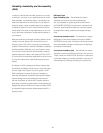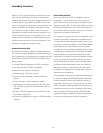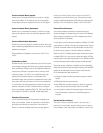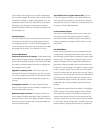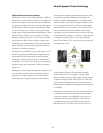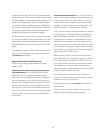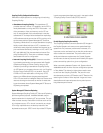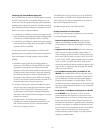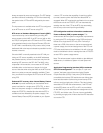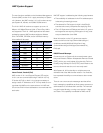Introducing long reach Infi niBand coupling links
Now, Infi niBand can be used for Parallel Sysplex coupling
and STP communication at unrepeated distances up to
10 km (6.2 miles) and greater distances when attached to
qualifi ed optical networking solutions. Infi niBand coupling
links supporting extended distance is referred to as Long
Reach 1x (one pair of fi ber) Infi niBand.
• Long Reach 1x Infi niBand coupling links support single
data rate (SDR) at 2.5 gigabits per second (Gbps) when
connected to a DWDM capable of SDR (1x IB-SDR).
• Long Reach 1x Infi niBand coupling links support double
data rate (DDR) at 5 Gbps when connected to a DWDM
capable of DDR (1x IB-DDR).
The link data rate will auto-negotiate from SDR to DDR
depending upon the capability of the attached equipment.
Other advantages of Parallel Sysplex using Infi niBand
(PSIFB):
• Infi niBand coupling links also provide the ability to
defi ne up to 16 CHPIDs on a single PSIFB port, allow-
ing physical coupling links to be shared by multiple
sysplexes. This also provides additional subchannels for
Coupling Facility communication, improving scalability,
and reducing contention in heavily utilized system con-
fi gurations. It also allows for one CHPID to be directed
to one CF, and another CHPID directed to another CF on
the same target server, using the same port.
• Like other coupling links, external Infi niBand coupling
links are also valid to pass time synchronization signals
for Server Time Protocol (STP). Therefore the same
coupling links can be used to exchange timekeeping
information and Coupling Facility messages in a Parallel
Sysplex environment.
• The IBM System z10 EC also takes advantage of
Infi niBand as a higher-bandwidth replacement for the
Self-Timed Interconnect (STI) I/O interface features
found in prior System z servers.
The IBM System z10 EC will support up to 32 PSIFB links
as compared to 16 PSIFB links on System z9 servers. For
either z10 EC or z9, there must be less than or equal to a
total of 32 PSIFBs and ICB-4 links.
Infi niBand coupling links are CHPID type CIB.
Coupling Connectivity for Parallel Sysplex
You now have fi ve coupling link options for communication
in a Parallel Sysplex environment:
1.
Internal Coupling Channels (ICs)
can be used for
internal communication between Coupling Facilities
(CFs) defi ned in LPARs and z/OS images on the same
server.
2.
Integrated Cluster Bus-4 (ICB-4)
is for short distances.
ICB-4 links use 10 meter (33 feet) copper cables, of
which 3 meters (10 feet) is used for internal routing and
strain relief. ICB-4 is used to connect z10 EC-to-z10 EC,
z10 BC, z9 EC, z9 BC, z990, and z890. Note. If connect-
ing to a z10 BC or a z9 BC with ICB-4, those servers
cannot be installed with the nonraised fl oor feature. Also,
if the z10 BC is ordered with the nonraised fl oor feature,
ICB-4 cannot be ordered.
3.
12x Infi niBand coupling links (12x IB-SDR or 12x
IB-DDR)
offer an alternative to ISC-3 in the data center
and facilitate coupling link consolidation. Physical links
can be shared by multiple operating system images or
Coupling Facility images on a single system. The 12x
Infi niBand links support distances up to 150 meters (492
feet) using industry-standard OM3 50 micron multimode
fi ber optic cables.
4.
Long Reach 1x Infi niBand coupling links (1x IB-SDR
or 1x IB-DDR)
are an alternative to ISC-3 and offer
greater distances with support for point-to-point unre-
peated distances up to 10 km (6.2 miles) using 9 micron
single mode fi ber optic cables. Greater distances can
be supported with System z-qualifi ed optical networking
solutions. Long Reach 1x Infi niBand coupling links sup-
port the same sharing capabilities as the 12x Infi niBand
version, allowing one physical link to be shared by
multiple operating system images or Coupling Facility
images on a single system.
51



